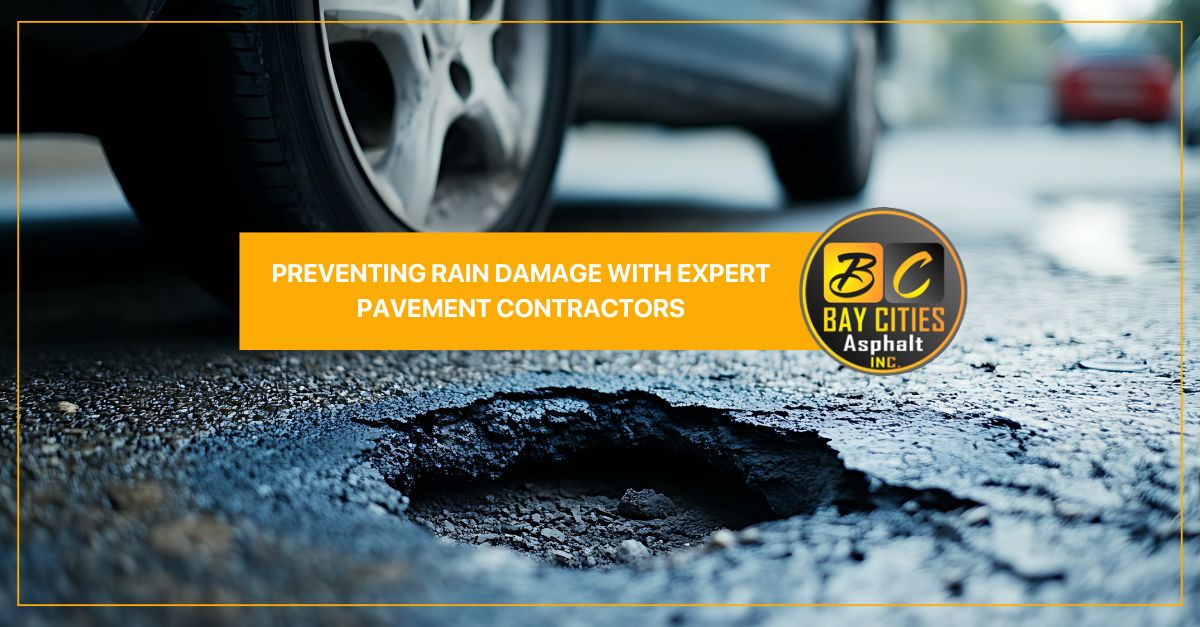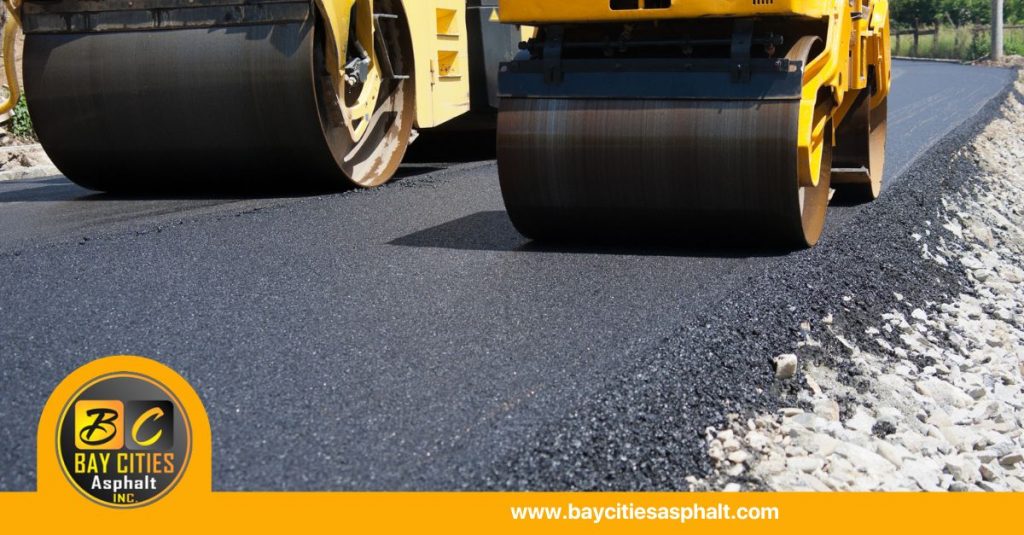
Rain might seem harmless, but for asphalt surfaces, it’s a persistent threat. Over time, water can seep into the pavement, leading to cracks, potholes, and a weakened foundation. This damage not only looks bad but can also become a safety hazard and lead to expensive repairs. Professional pavement contractors understand these risks and implement effective strategies to minimize water damage before it becomes a major issue.
Protecting your investment requires a proactive approach. Professional pavement contractors use a combination of techniques to shield asphalt from the destructive effects of water. This guide will walk you through the key strategies they employ to ensure your driveways, parking lots, and roads remain durable and long-lasting, even in wet conditions. By understanding these methods, you can make informed decisions about maintaining your asphalt surfaces.

Building a Foundation for Drainage with Professional Pavement Contractors
The first line of defense against water damage isn’t a sealant or a special coating—it’s gravity. Effective water management starts with how the pavement is constructed. Pavement contractors are experts in shaping the land to ensure water flows away from the surface naturally, preventing it from pooling and causing problems.
Proper Drainage Grading
When installing new asphalt, contractors pay close attention to grading. This involves carefully sloping the surface so that rainwater is directed toward designated drainage areas, like storm drains or the edges of the pavement. A typical slope is around 2%, which is subtle enough to be unnoticeable to drivers but effective enough to guide water away.
By creating this gentle incline, contractors prevent water from standing on the asphalt. Standing water is one of the biggest culprits of asphalt damage, as it slowly penetrates the surface, weakening the binding agents and creating soft spots that can turn into potholes. Proper grading is a fundamental step that sets the stage for long-term durability.
Installing and Improving Water Runoff Systems
In many cases, simple grading isn’t enough, especially for large areas like commercial parking lots. Pavement contractors also install and maintain comprehensive water runoff systems to manage heavy rainfall. These systems can include:
- Catch Basins and Storm Drains: These are collection points for runoff water, strategically placed in low-lying areas of the pavement. Water flows into the basins and is then channeled away through an underground pipe system. Contractors ensure these are correctly installed and regularly maintained to prevent clogs.
- French Drains: For areas with persistent drainage issues, a French drain can be an effective solution. This is a trench filled with gravel or rock that contains a perforated pipe. It redirects surface and groundwater away from the asphalt.
- Curbing and Gutters: Concrete curbs not only define the edges of the pavement but also act as a barrier, directing water flow toward gutters and drains.
A well-designed drainage system is crucial for protecting the sub-base of the asphalt, which is the foundation that supports the entire structure. If the sub-base becomes saturated with water, it can lose its strength, leading to widespread pavement failure.
Sealing the Surface Against Moisture: How Professional Pavement Contractors Protect Asphalt
Once the drainage is handled, the next step is to make the asphalt surface itself as water-resistant as possible. Asphalt is naturally porous, meaning it has tiny voids that water can penetrate. Over time, exposure to sun and air causes the asphalt to oxidize and become even more porous. Pavement contractors use several surface treatments to create a protective barrier.
Crack Sealing and Filling
Cracks are the most direct pathway for water to enter the pavement’s foundation. Even small cracks can widen over time, especially with the freeze-thaw cycles that occur in colder climates. Water gets into the cracks, freezes, expands, and makes the cracks larger.
Pavement contractors address this with crack sealing. They clean out any debris from the cracks and then fill them with a hot-applied rubberized sealant. This material is flexible, so it can expand and contract with the pavement as temperatures change without breaking the seal. Sealing cracks promptly is one of the most cost-effective maintenance tasks you can perform to extend the life of your asphalt.
The Power of Sealcoating
Sealcoating is another essential protective measure. It involves applying a thin layer of a high-quality sealant over the entire asphalt surface. This coating serves several important functions:
- Waterproofing: It fills the surface voids in the asphalt, creating a waterproof membrane that prevents water from seeping in.
- UV Protection: The sun’s ultraviolet rays can dry out the asphalt, making it brittle and prone to cracking. A sealcoat acts like sunscreen for your pavement.
- Chemical Resistance: It protects the asphalt from damage caused by oil, gas, and other chemical spills.
- Enhanced Appearance: A fresh sealcoat gives the pavement a rich, black finish, improving its curb appeal.
Professional pavement contractors typically recommend applying a sealcoat every two to three years, depending on the climate and traffic volume. It’s a proactive step that significantly slows down the aging process of asphalt and keeps it resilient against rain damage.
Choosing the Right Materials with Professional Pavement Contractors
The quality of the materials used in both the initial installation and subsequent maintenance plays a significant role in how well the pavement resists water damage. Professional pavement contractors understand the importance of using the right asphalt mix for the specific climate and expected traffic load.
For example, some asphalt mixes are designed to be less porous, offering better natural resistance to water. Additives can also be included in the mix to improve its durability and waterproofing properties. When it comes to sealants and crack fillers, using high-quality, professional-grade products ensures a stronger, more durable bond that provides long-lasting protection.
Your Partner in Pavement Protection
Protecting asphalt from rain damage requires a multi-faceted approach, from smart initial design to consistent, proactive maintenance. By ensuring proper drainage, sealing cracks, applying protective sealcoats, and using high-quality materials, pavement contractors can dramatically extend the life of your asphalt surfaces and save you from costly repairs down the road.
If you’re concerned about the condition of your driveway or parking lot, it’s best to consult with a professional. At Bay Cities Asphalt, Inc., we have been serving the Bay Area for over two decades. As a family-owned business passed down through three generations, we specialize in asphalt and concrete replacement, repair, overlay, and milling. Our experienced team can assess your pavement and recommend the most effective strategies to protect it from water damage. Contact us today to learn how we can help keep your asphalt in top condition for years to come.
